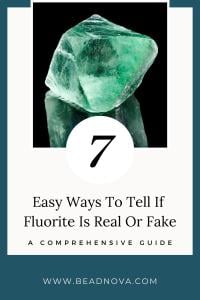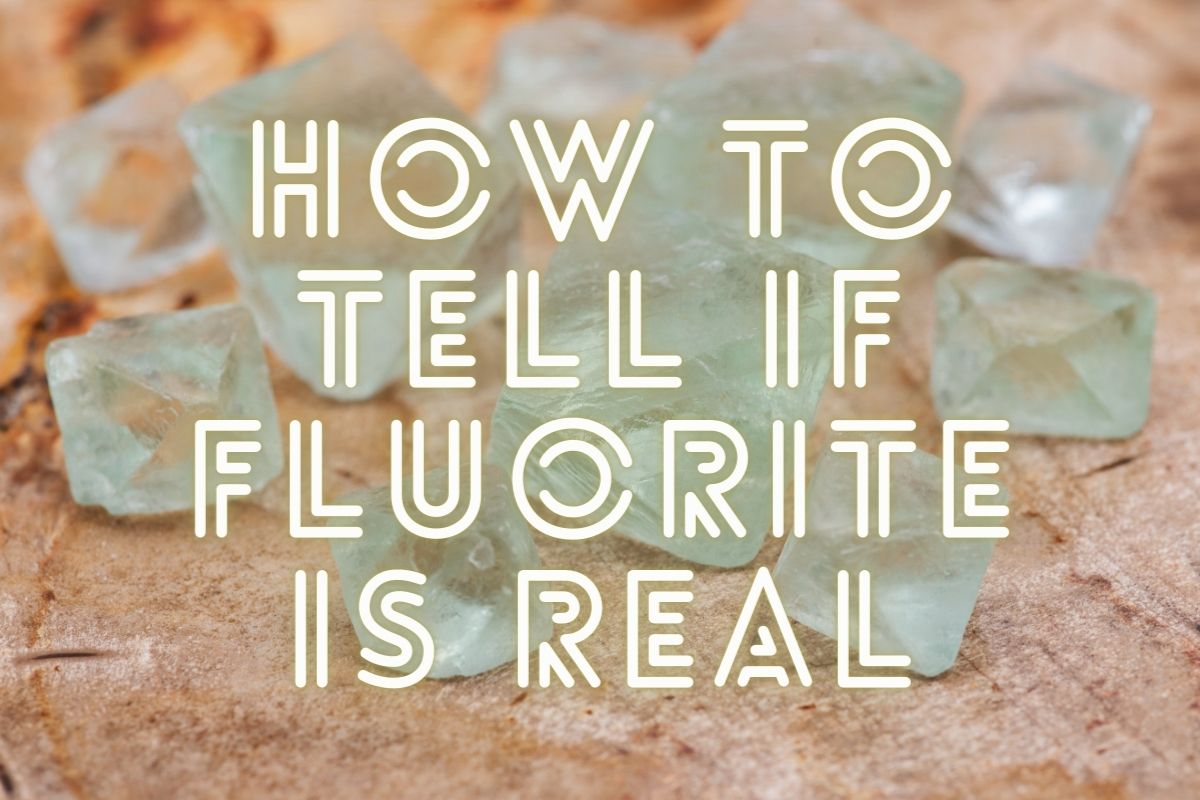Fluorite, a popular and attractive mineral, is known for its mesmerizing colors and unique properties. As its popularity grows, so does the market for fake fluorite. To ensure you’re getting the real deal, it’s crucial to know how to tell if fluorite is real. In this article, we’ll cover seven simple methods to help you identify genuine fluorite at home, as well as delve into the fascinating world of fluorite and its uses. Get ready to become an expert in distinguishing real vs fake fluorite.
Table of Contents
Fluorite: A Unique and Versatile Mineral
Before diving into the methods of identifying genuine fluorite, it’s essential to understand what makes this mineral so special. Fluorite, also known as fluorspar, is a mineral composed of calcium fluoride (CaF2). Its wide range of vibrant colors and cubic crystal structure make it a highly sought-after gemstone for collectors and jewelry enthusiasts.
In addition to its beauty, fluorite also has industrial applications. It is a primary source of fluorine, a critical element in the production of various products like refrigerants, non-stick coatings, and pharmaceuticals. Its ability to fluoresce under ultraviolet (UV) light also makes it a valuable mineral for research and optical applications.
7 Easy Ways to Tell If Your Fluorite Is Real:
1. Visual Inspection: Color, Transparency, and Crystal Structure
The first step in how to identify fluorite is to examine its appearance closely. Genuine fluorite comes in a wide range of colors, from colorless to deep purple, blue, green, yellow, and even pink. However, the color should be consistent throughout the crystal. Fake fluorite often has uneven color distribution or unnatural shades. Some counterfeit fluorite is made using materials like dyed quartz, glass, or resin, which can be detected through a thorough visual inspection.
Fluorite also exhibits a perfect cleavage, meaning it breaks along smooth, flat surfaces. Inspect the crystal structure for any irregularities or inconsistencies. Real fluorite will have a transparent to translucent appearance and a vitreous (glass-like) luster.
2. Hardness Test: Using the Mohs Scale
A helpful method for determining how to tell if fluorite is real is by conducting a hardness test. The Mohs scale of mineral hardness ranks minerals based on their ability to scratch or be scratched by other minerals. Fluorite has a hardness of 4 on the Mohs scale, making it relatively soft.
To perform a hardness test, find a mineral or object with a known hardness, such as a copper coin (hardness 3) or a steel nail (hardness 5). Gently scratch the fluorite with the test object. If the coin doesn’t scratch the fluorite but the nail does, you likely have genuine fluorite. Keep in mind that excessive force can damage even genuine specimens, so always proceed with caution.
3. Streak Test: Observing the Powdered Color
Differentiating between real vs fake fluorite can be as simple as performing a streak test. The streak test helps identify minerals by observing the color of their powdered form when rubbed against a streak plate (a piece of unglazed porcelain).
To perform the test, gently rub the fluorite against the streak plate and observe the color of the resulting streak. Genuine fluorite should produce a white streak, regardless of the color of the mineral itself. A colored streak may indicate a fake. Note that the streak test can be a messy process, so be prepared to clean up the resulting powder.
4. UV Light Test: Fluorescence Under Ultraviolet Light
One fascinating property of fluorite is its ability to fluoresce under ultraviolet (UV) light. To conduct a ultraviolet testing, shine a UV flashlight on the fluorite in a dark room. Real fluorite should emit a blue, green, or purple glow depending on its composition. Be aware, however, that not all fluorite specimens will fluoresce, and the intensity may vary. Factors such as impurities in the crystal or the wavelength of the UV light can influence the fluorescence. While this method isn’t foolproof, it can provide additional clues about your fluorite’s authenticity.
5. Scratch Test: Marking Glass and Other Surfaces
Another way to determine how to tell if fluorite is real is by conducting a scratch test. As mentioned earlier, fluorite has a hardness of 4 on the Mohs scale. This means it should be able to scratch materials with a lower hardness but not those with a higher hardness.
To perform a scratch test, gently attempt to scratch the surface of a glass or a piece of calcite with the fluorite. Genuine fluorite should be able to scratch calcite (hardness 3) but not glass (hardness 5.5). If the fluorite scratches both materials, it’s likely fake. Keep in mind that performing scratch tests may result in minor damage to the test materials, so choose your test subjects wisely.
6. Specific Gravity Test: Measuring Density
Specific gravity, a measure of a mineral’s density, can be a useful tool in identifying real vs fake fluorite. The specific gravity of genuine fluorite typically ranges from 3.1 to 3.3.
To conduct a specific gravity test, you’ll need a precision scale, a container of water, and a suspension apparatus (such as a thread or thin wire). First, weigh the fluorite in air and record its weight (W1). Then, suspend the fluorite in water and weigh it again (W2). Calculate the specific gravity using the formula: specific gravity = W1 / (W1 – W2). If the result falls within the 3.1 to 3.3 range, your fluorite is likely genuine. This test can be a bit more involved, but it can provide valuable information about the mineral’s authenticity.
7. Professional Gemstone Testing: Seeking Expert Assistance
While the methods mentioned above can be helpful in determining how to identify fluorite, they may not always be conclusive. In such cases, it’s essential to seek professional gemstone testing. Experts can use advanced techniques like Raman spectroscopy, X-ray diffraction, and chemical analysis to provide a more accurate assessment of your fluorite’s authenticity. Additionally, gemstone professionals may offer certification services, which can be beneficial when buying or selling fluorite.
Caring for Your Fluorite: Tips and Tricks
Once you’ve confirmed that your fluorite is genuine, it’s important to care for it properly. Fluorite is a relatively soft mineral, and it can be easily scratched or damaged. Store your fluorite separately from harder gemstones or minerals to prevent damage. Clean your fluorite using a soft cloth and mild soap, avoiding harsh chemicals and abrasives. Keep your fluorite out of direct sunlight, as prolonged exposure can cause some fluorite colors to fade.
Conclusion
Armed with these seven easy ways, you’re now better prepared to tell if your fluorite is real. By thoroughly examining its appearance, conducting various tests, and seeking professional assistance when needed, you can be confident in your ability to distinguish between real vs fake fluorite. By ensuring the authenticity of your fluorite, you can fully appreciate

More articles about Crystals you like:
The Ultimate Guide To Using Healing Crystal For Beginners
5 Easy Ways on How to Tell if Amethyst is Real or Fake
7 Ways On How to Tell If Your Clear Quartz Is Real or Fake
How to Tell If An Opal is Real?
How to Tell If Your Emerald Is Real?
How To Tell if a Garnet is Real?
How To Tell If The Turquoise Is Real?




Leave A Comment